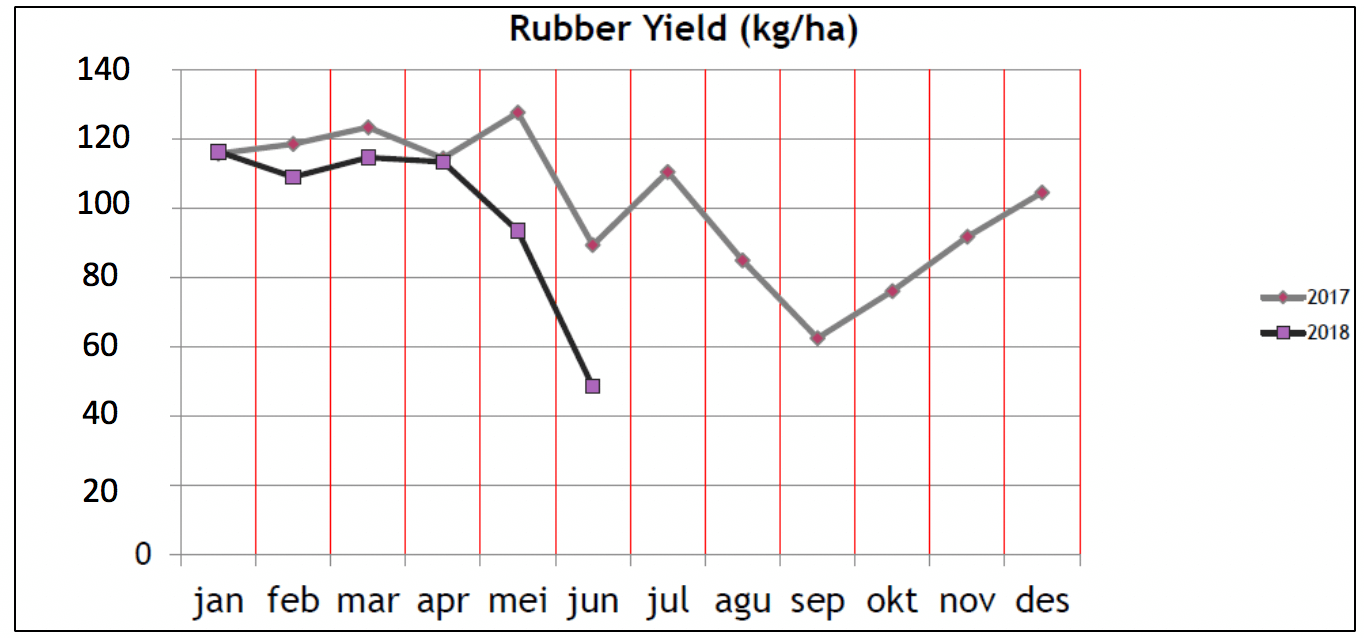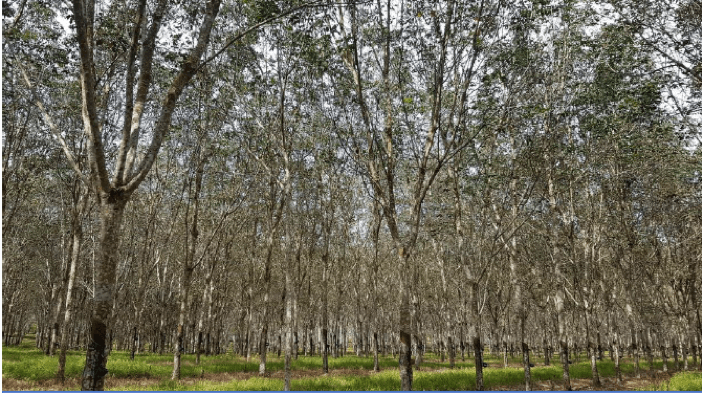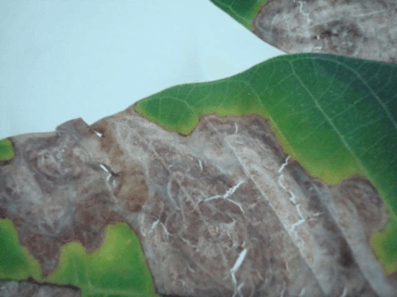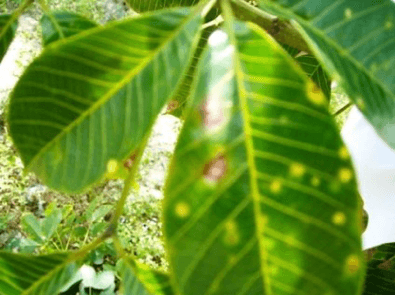
The Sorry State of the Indonesian Hevea
By Kavickumar s/o Muruganathan
Vice President, Environment, Health & Safety – Halcyon Agri Corporation Limited
The rubber tree (Heveabrasiliensis) is the only commercial source of natural rubber. Its cultivation can be severely limited by pathogenic diseases such as the Fusicoccum leaf fall disease. An outbreak of the disease was first recorded in 1987 in south Peninsular Malaysia. The disease first occurred in Indonesia in 2016 in North Sumatra and has now spread to the southern Sumatra region from the end of 2017. Areas in South Kalimantan, Java, Lampung and Central Sulawesi have also been said to be affected. Fusicoccum attacks all forms of natural rubber clones and has affected more than 22,000 hectares of rubber plantations till date (Figure 1). Diagnosis of the disease is no easy task as the onset of visible symptoms are not evident until after some time.
 Figure 1: Land area affected by Fusicoccum leaf disease in North Sumatra, South Sumatra, Lampung, Central Java, East Java, Central Sulawesi & South Kalimantan (Source: Sembawa Research Centre, Indonesia Rubber Research Institute).
Figure 1: Land area affected by Fusicoccum leaf disease in North Sumatra, South Sumatra, Lampung, Central Java, East Java, Central Sulawesi & South Kalimantan (Source: Sembawa Research Centre, Indonesia Rubber Research Institute).
The Fusicoccum leaf fall disease is caused by the fungus of Neofusicoccum ribis. Disease symptoms typically appear only after stress caused by abiotic and biotic disturbances. The fungus causes severe infections that result in the defoliation (ranging from 30-80%) of the tree with a noticeable reduction of the canopy and a consequent reduction in the yield of latex.
From the experimental studies conducted by the Sembawa Research Institute, it can be seen that natural rubber yield decreased by up to 27% in May 2018 as compared to the same period last year due to Fusicoccum leaf fall disease. The yield reduced further by 45.8% in June 2018 as compared to same period in June 2017 (Figure 2). The Fusicoccum leaf fall disease clearly is a threat to the sustainability and economic viability of the natural rubber industry; but more importantly a threat to the livelihood of smallholder farmers.
 Figure 2: Indonesia rubber yield (kg/ha) comparison between 2017 & 2018 (Source: Sembawa Research Centre Experimental Garden Unit).
Figure 2: Indonesia rubber yield (kg/ha) comparison between 2017 & 2018 (Source: Sembawa Research Centre Experimental Garden Unit).
Fusicoccum leaf fall disease usually attacks young leaves. The first symptom is brown spots on the leaves. The small spots will change from light to dark brown. These spots will form larger necrotic area of the leaves. Typical symptoms of older leaves are the concentric brown zone on the upper surface of the leaves. On each leaf, there is one or more concentric spots. The severely infected leaves will become dry, fall, or become abnormal leaves on the branches of the plant. Infected leaves fall about 4 months after infection. The occurrence of Fusicoccum leaf fall disease can also have far reaching effects as a result of international trade as they may be spread undetected from one area to another, causing potentially serious damage to hosts that might have no co-evolved resistance.

Photo courtesy of Nyaka Ngobisa, Senior Research Officer / Plant Pathologist Institute of Agricultural Research for Development (IRAD), Cameroon
Figure 3: Massive defoliation of rubber plantations in Sumatra in 2018 due to Fusicoccum leaf disease.


Photos courtesy of Nyaka Ngobisa, Senior Research Officer / Plant Pathologist Institute of Agricultural Research for Development (IRAD), Cameroon
Figure 4: Leaves of rubber trees exhibiting symptoms of Fusicoccum leaf fall disease.
At present, knowledge and research into the pathogenic fungus Fusicoccum is limited. No study has yet to be commissioned on the potential economic impacts of the disease to the natural rubber industry and smallholder farmers. Over the last year, numerous smallholder farmers have lost large vast swathes of their plantation area to the Fusicoccum leaf fall disease. They are not adequately equipped with know-how and technological expertise to combat this potent fungus. Plant scientists have postulated that early and efficient pathogen identification coupled with a good integrated disease management plan would be crucial to combat Fusicoccum. This also includes eradication of alternate hosts and developing more disease resistant and tolerant natural rubber clones as well as better chemical treatment. But a definite solution to combat this disease has not emerged.
Halcyon Agri Corporation Limited recently commissioned an independent crop survey in 4 areas in the districts of Prabumulih and Maura Enim in the South Sumatra province. 7 dealers were visited and 15 interviews were conducted. Compared to 2017, latex yield has dropped in 2018. Smallholder farmers who used to produce an average of 400 kg of latex per hectare per month can now only produce 300 kg of latex per hectare per month in the areas of Sungai Medang and Tanjung Telang and 200 kg of latex per hectare per month in Gunung Kemala despite tapping for 6 consecutive days and having one day of rest. This drop in yield has been attributed to the Fusicoccum fall leaf disease.
The future of the Indonesia Hevea remains at risk. Vast swathes of rubber trees have already been lost to the Fusicoccum pathogen and more losses are due until a concrete solution is found to combat this dilapidating disease. What impacts would this have on the natural rubber supply chain and the livelihood of smallholder farmers at the current natural rubber price? Or are we about to witness the slow demise of the Indonesian Hevea which has served us well over the years
______________________________________
Kavickumar s/o Muruganathan
Vice President, Environment, Health & Safety – Halcyon Agri Corporation Limited


